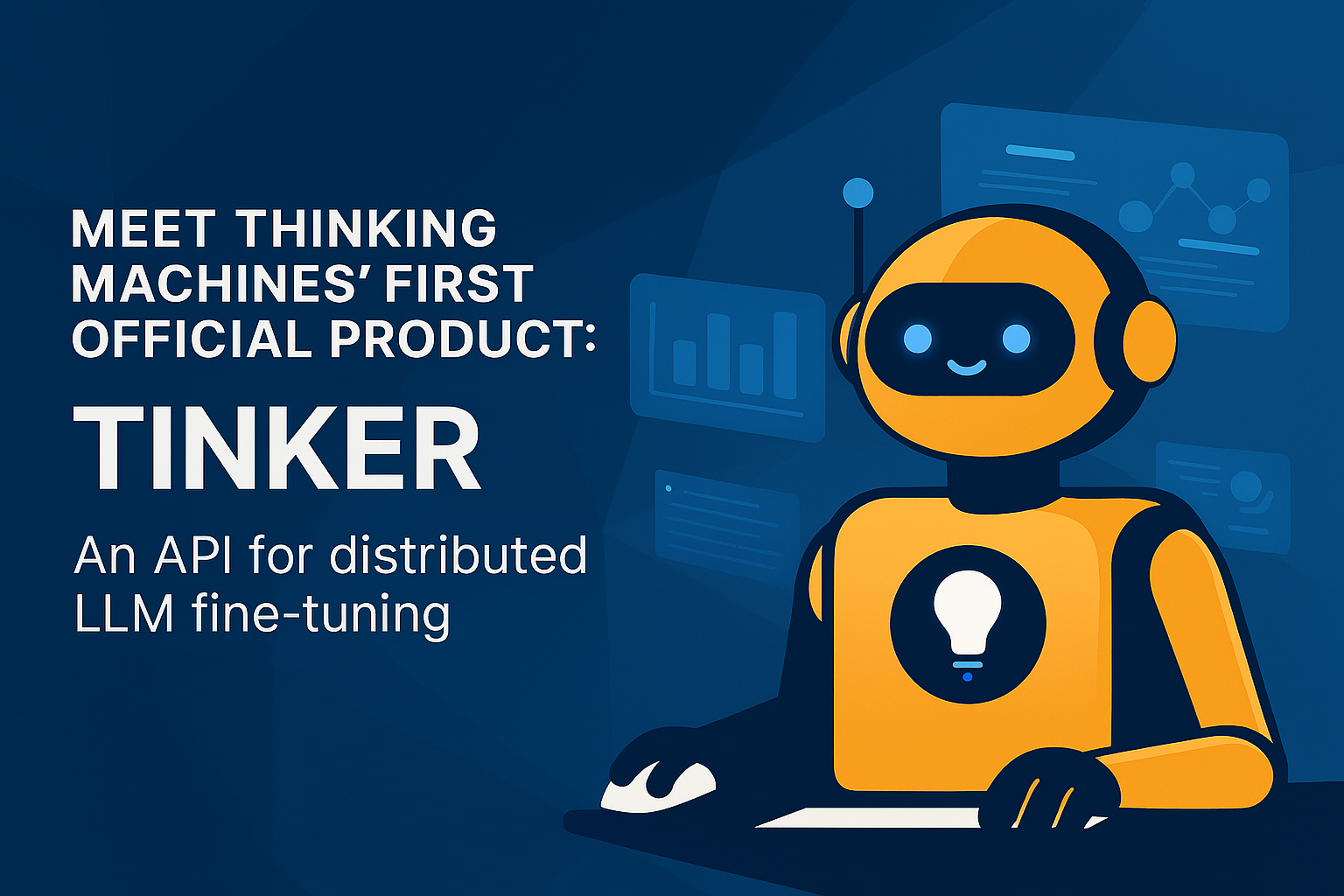Physical Address
304 North Cardinal St.
Dorchester Center, MA 02124
Physical Address
304 North Cardinal St.
Dorchester Center, MA 02124

In the rapidly evolving world of artificial intelligence, the ability to fine-tune large language models (LLMs) efficiently and at scale is becoming a cornerstone of innovation. Enter Tinker, the first official product from Thinking Machines, a company known for pushing the boundaries of machine learning infrastructure. Tinker is not just another API — it’s a powerful platform designed to democratize distributed LLM fine-tuning, making it accessible, scalable, and developer-friendly.
Whether you’re a startup building custom AI agents, a research lab experimenting with novel architectures, or an enterprise optimizing internal NLP systems, Tinker promises to be a game-changer.
Tinker is a cloud-native API that enables distributed fine-tuning of large language models across multiple nodes. Built with scalability and modularity in mind, it allows developers to train and customize LLMs using their own datasets, without the need for deep infrastructure expertise.
At its core, Tinker abstracts away the complexity of distributed training. It handles:
This means developers can focus on what matters most — building smarter, more personalized AI systems — while Tinker takes care of the heavy lifting.
Fine-tuning LLMs is essential for adapting general-purpose models to domain-specific tasks. However, traditional fine-tuning methods are resource-intensive and often limited to single-node setups. This leads to:
Tinker solves these problems by distributing the workload across multiple GPUs or cloud instances. This results in:
For organizations working with massive corpora or needing real-time adaptation, distributed fine-tuning is no longer a luxury — it’s a necessity.
Here’s what makes Tinker stand out in the crowded AI tooling landscape:
Tinker’s RESTful API is designed for ease of use. Developers can initiate fine-tuning jobs with just a few lines of code, using familiar tools like Python, cURL, or Postman.
Tinker automatically distributes training across multiple nodes, optimizing for latency, throughput, and fault tolerance.
Supports popular LLM architectures including:
Tinker includes built-in encryption, access controls, and audit logs to ensure that sensitive data remains protected during training.
Real-time dashboards provide insights into training progress, resource usage, and model performance metrics.
Developers can pause, resume, or roll back training jobs with full version control.
Tinker’s versatility makes it ideal for a wide range of applications:
Companies can fine-tune LLMs on proprietary customer support logs, legal documents, or financial reports to build domain-specific chatbots and summarization tools.
Researchers can experiment with novel training techniques, datasets, and architectures without worrying about infrastructure setup.
Retail platforms can fine-tune models on user behavior data to generate personalized product descriptions, recommendations, and search results.
Hospitals and clinics can adapt LLMs to medical terminology and patient records for improved diagnostics and documentation.
AI startups can use Tinker to build autonomous agents that understand niche domains, perform complex tasks, and interact naturally with users.
| Feature | Tinker | Hugging Face Trainer | OpenAI Fine-Tuning API |
|---|---|---|---|
| Distributed Training | ✅ Yes | ❌ Limited | ❌ No |
| Model Compatibility | ✅ Broad (GPT, BERT, LLaMA) | ✅ Hugging Face Models | ❌ Proprietary Models Only |
| API-Based Interface | ✅ RESTful | ❌ Script-Based | ✅ RESTful |
| Real-Time Monitoring | ✅ Built-in Dashboard | ❌ Manual Logging | ❌ Minimal |
| Checkpointing & Rollback | ✅ Full Support | ✅ Partial | ❌ No |
| Data Privacy Controls | ✅ Enterprise-Grade | ❌ Basic | ✅ Limited |
Tinker’s unique combination of distributed architecture, model flexibility, and developer-first design makes it a compelling choice for teams serious about LLM customization.
In internal tests conducted by Thinking Machines, Tinker demonstrated impressive performance:
These benchmarks highlight Tinker’s ability to handle real-world workloads with speed and precision.
Thinking Machines has built Tinker with enterprise-grade security in mind. Key safeguards include:
This makes Tinker suitable for sensitive applications in finance, healthcare, and government sectors.
Thinking Machines offers a generous free tier for developers and researchers. To get started:
Comprehensive documentation and SDKs are available for Python, Node.js, and Go.
“Tinker is the missing piece in the LLM ecosystem. It’s like having a DevOps team for AI training.” — CTO, AI startup
“We fine-tuned a legal chatbot in 48 hours using Tinker. The results were astonishing.” — Lead Engineer, LegalTech firm
“Finally, a tool that lets us scale LLM training without burning out our infrastructure team.” — ML Researcher, University Lab
Tinker is more than a product — it’s a vision for the future of AI development. As models grow larger and tasks become more complex, distributed fine-tuning will become the norm. Thinking Machines is betting on this future, and Tinker is their first bold step.
Upcoming features on the roadmap include:
Thinking Machines has officially entered the AI tooling arena with a bang. Tinker is a robust, scalable, and developer-friendly API that addresses one of the most pressing challenges in modern AI: distributed fine-tuning of large language models.
With its powerful features, enterprise-grade security, and intuitive design, Tinker is poised to become a staple in the AI developer’s toolkit.
If you’re building the future of intelligent systems, Tinker is the tool you’ve been waiting for.